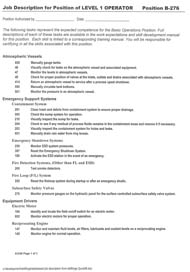|
Tasks,
categories, job assignments
SkillForge
is designed to rapidly capture task descriptions and group and tag
them in a number of useful ways. This information has proven very
useful in a wide range of enterprise performance initiatives:
- Team-based
work management
- Multi-skilling
-
Job task safety analyses
- Manager
responsibility definition
- Work
redundancy elimination
- Strategic
Repertoire Development™
- Core
competency definition and assessment
Program
inputs
The Work Analysis module defines work and competencies SkillForge
begins with job information — the structure of job titles and their
hierarchy. To this structure, the system adds comprehensive work
descriptions from job task analyses. Figure 1 is a schematic of
principal inputs and outputs of this module.
 Tasks
can be categorized at two levels. They can also be assigned to a
specific skill area or job title, job level and area of the enterprise.
(This categorization structure is customizable to match a company’s
needs.) Tasks
can be categorized at two levels. They can also be assigned to a
specific skill area or job title, job level and area of the enterprise.
(This categorization structure is customizable to match a company’s
needs.)
Other
information that can be paired with a task includes the frequency
with which it is performed; its criticality, either to operations
or safety; whether it requires a procedure; and whether it is a
preventive maintenance or PSM task.
The
task/skill analysis module also permits linking procedures or resources
to the task, to simplify procedures assessment and development of
performance aids or training. SkillForge provides a section for
general comments. Many users summarize task steps in this section.
Skill
definitions
Skill
objectives are also managed by the system. Skill objectives
represent the competencies required to perform a group of
tasks.
Input
screens permit linking any number of performance criteria
to skills, to make performance expectations very clear. In
addition, the program links information that trainers and
certifiers can use in their work—the type of skill, verification
method and whether a skill can be evaluated with a written
test or by observation.
|

A
typical SKILL CERTIFICATION GUIDE page. Click on the image to
see a full-size page. |
Validity
of work expectations
Validity of work expectations is an important human resources concern.
Competency tests and skill definitions created by other means often
require rigorous validation because they are externally imposed.
Repertoire processes build tasks and skills from grass-roots work
definitions provided by competent performers. The program identifies
the tasks in which each skill is discovered to verify validity.
Task-
and skill-based output
From task and skill information, the system creates
a number of tools. These tools represent a comprehensive definition
of a company’s work.
Functional
Job Descriptions
Specific tasks —linked to procedures, notes and resources —
provide more information about work expectations than activity
descriptions. Task-based job descriptions can be fed directly
into preventive maintenance or predictive maintenance programs.
When coupled with information about how frequently a task should
be performed, the system can provide a work punch list. |

A
typical OPERATOR job description. Click on the image to see
a full-size page. |
Job
Work Analysis
In the old workplace, job responsibilities were often defined
piecemeal. For example, a might develop a series of manuals—safety,
loss prevention, emergency response, etc.—that specified or
implied the work that individuals were expected to perform.
SkillForge provides reports that enable companies to identify
unassigned or misassigned work, redundant assignments and unreasonable
work loads. The result is a simplified work process. Because
task and skill information is captured in a relational database,
realigning tasks and jobs is a simple process. All associated
information comes forward with tasks and skills when they are
re-categorized. |

A
typical MANAGER job description. Click on the image to see a
full-size page. |
Skill
qualification guides
One of the most-used tools is the Skill
Qualification Guide. The skill qualification guide lists all
skills and criteria in a given skill area and level. The skills
are grouped by modules. (For full information about module development,
see training section, below.) Additional information in a Guide
enables an employee to perform a self-assessment of competence and
locate any necessary training. A guide also indicates what kind
of verification to expect. As self-assessment and verifications
are completed, the employee and subject expert can record those
completions. Making employees responsible for their personal development
plan and tracking reduces administrative overhead and increases
responsibility.
|


 Tasks
can be categorized at two levels. They can also be assigned to a
specific skill area or job title, job level and area of the enterprise.
(This categorization structure is customizable to match a company’s
needs.)
Tasks
can be categorized at two levels. They can also be assigned to a
specific skill area or job title, job level and area of the enterprise.
(This categorization structure is customizable to match a company’s
needs.) 

